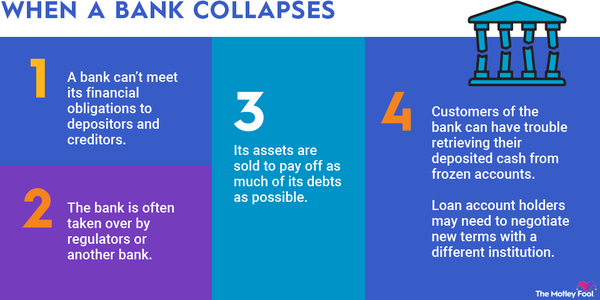Blockchain technology is incredibly secure by design. As the technology platform behind cryptocurrencies, you should expect a healthy dose of powerful encryption in blockchain networks, but there’s more to blockchain’s data security story.
Is blockchain safe to use?
Is blockchain safe to use?
Blockchains manage a large-scale record of transactions and additional data wrapped in several layers of data security. As a result, these systems are generally regarded as safe and secure.
A blockchain is a digital ledger of transactions managed and updated by a distributed network of computers. It is easy to read the ledger and to add additional data to the chain of transactions, although each new transaction must clear several security hurdles before it is added to the blockchain. Nobody can change or delete existing data. Any attempt to tamper with the ledger is easily traced back to the prospective hacker, who then typically loses access to the network.

Why is blockchain so secure?
Why is blockchain so secure?
New transactions are added to a blockchain in a process called “minting” a new block of data. All block-minting systems have a few qualities in common:
- Every block has a unique address.
- Each new block contains a link to the block before it, forming a sequence of data blocks stretching all the way back to each blockchain’s first block.
- Together with a fresh batch of data for validating transactions, the link is protected by data encryption ensuring the correct link to the previous block is written in stone and cannot be changed.
- Each new block must be confirmed by a certain number of validation nodes reaching a consensus and minting a new token to match the freshly minted data block.
Beyond these core concepts, different blockchains can perform their minting function in many different ways. The original system is known as proof of work, where new data blocks are minted in a process known as mining. Vast numbers of computers and specialized mining systems solve complex mathematical puzzles to earn the right to issue the next data block.
This was the platform for the first cryptocurrency and blockchain system, Bitcoin (BTC -1.58%), and it remains in effect today. Critics argue this method wastes enormous amounts of computing power and electricity, while supporters appreciate the fact that it takes an unrealistic investment in mining hardware to break the security of this system in a brute-force attack.
Another popular block-minting architecture is known as proof of stake. Here, transactions are validated and baked into data blocks by existing holders of the blockchain’s digital tokens. Data validators in this system must make the choice of staking their tokens on the validation system. You can’t sell, burn, or give away tokens that are being used in this way, but you earn rewards in the form of newly minted data blocks. Staking more tokens gives you a greater chance of earning the next minting reward.
This method puts less stress on the environment, but critics like to point out that large token holders can exert an unreasonable amount of control over this type of blockchain network. If you see blockchain technologies and digital currencies as a disruptive alternative to old-school financial institutions and payment systems, proof-of-stake blockchains can’t offer the same promise of truly decentralized operations. The central control constitutes a single point of failure, and that’s a weakness that can be more easily attacked by bad actors.
No financial system or data platform is free from security issues, and blockchain is no exception. Blockchains are not unhackable -- it’s just very difficult to breach them.
How secure is blockchain?
How secure is blockchain?
No financial system or data platform is free from security issues, and blockchain is no exception. Blockchains are not unhackable. It’s just very difficult to breach them.
There are only two ways to actually break the security of an established blockchain system, and both of them require a massive amount of computing power (in the case of proof-of-work blockchains) or of existing tokens (for proof-of-stake systems).
The first attack vector is known as a 51% attack. Most blockchains rely on a simple majority for their network management functions, which makes it possible to insert fake data, double-spend cryptocurrency coins, and do other bad things if you control more than half of all verification nodes. Again, there is safety in numbers, and this attack is nearly impossible to execute on networks the size of Bitcoin or Ethereum (CRYPTO:ETH), but brand-new altcoins may be small enough to fall victim to this method.
Bugs in the blockchain management system’s code may allow the insertion of incorrect data blocks in other ways. As usual, the older and larger networks are essentially immune because they have been operating in public for many years while dodging or blocking every conceivable type of bug-exploiting attack along the way.
New bugs may enter the system in future code updates, but updates are reviewed by thousands of operators who have a vested interest in correct and secure operations, and they cannot take effect unless a majority of node operators install and run the faulty code. Once again, newer blockchains face greater difficulties here, but they also have the benefit of learning from the mistakes of attacks on the big blockchains.
It’s true that cryptocurrency trading exchanges and digital wallets have been hacked in the past, but that’s a separate issue. Shoddy security, human error, or limited cybersecurity budgets can lead to cryptocurrency accounts being hacked, so investors should pay attention to each trading and storage platform’s reputation for iron-clad security.
What’s the difference between public and private blockchains?
What’s the difference between public and private blockchains?
Blockchain-based ledger systems can be kept on a tightly controlled private network. Thanks to several layers of data security features, they can also run on the open internet. Most of the blockchains and cryptocurrencies you hear about every day are public, but many technology companies are happy to set up private blockchain networks if that’s what you need.
Anyone can join a public blockchain network. The ability to run data nodes, process validations, store copies of the entire ledger, and play other parts in the blockchain network is not restricted, and this type of system is a truly decentralized network.
A private blockchain moves away from the ideal of decentralized management, locking down the access to nodes with the help of passwords, two-factor authentication, and other user management tools. In extreme examples, the blockchain may run entirely inside a single company or organization’s private network infrastructure, relying on firewalls and secure data centers to keep every bit of blockchain data under tight control.
This is a double-edged sword. The security of a public blockchain relies on the idea of safety in numbers, and a private network drops that idea in exchange for central authority. This makes sense if the blockchain in question was designed to fill a proprietary function that nobody outside that organization should ever have access to or control over. In most use cases, however, a decentralized approach is more secure.
Blockchain security applications
Blockchain security applications
Beyond the well-known examples of blockchain-based cryptocurrencies and other decentralized finance applications, blockchain networks can be used with other stores of sensitive information where bulletproof data security is an absolute must.
Blockchain in cybersecurity
In a general sense, blockchain ledgers can protect any stream of transactions, measured data, personal information, or business secrets. The blockchains used for each of these data streams would be quite different, of course.
A mobile app could manage payments, much like a normal credit card, using a public blockchain focused on financial data. An Internet of Things (IoT) device can collect data locally, pre-process it into a smaller bundle of data that’s ready for deeper analysis in a data center somewhere, and then use an Ethereum-like smart contract blockchain to submit that package and perhaps take action on the results.
Blockchain in data security
Blockchain in data security
Years down the road, personal data such as Social Security records, driver’s licenses, and employment histories could be managed by some sort of blockchain network. It will be up to voters and authorities to determine how public or private this network should be and whether a private personal data solution belongs under government control.
Healthcare security belongs in the same discussion, and it remains to be seen how comfortable we are making medical records available in a digital network with global reach -- even if the data itself is securely nestled in the usual layers of security protocols.
These are just a few examples of data security and cybersecurity uses for blockchain systems. Others will surely pop up as inventors and entrepreneurs turn their talents toward the blockchain space. We have only just begun exploring what these immutable data ledgers can do.
































































































